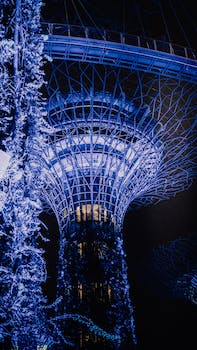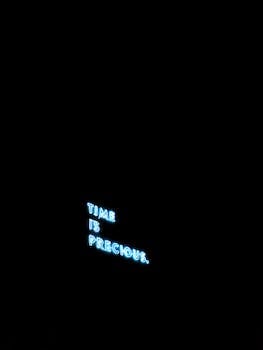

-
Table of Contents
Unveiling the soul of words through poetic insight.
Introduction
Understanding the Essence of Poetry: An Introduction
Poetry, a form of literary expression, has captivated and intrigued readers for centuries. It is a unique art form that uses language to evoke emotions, paint vivid imagery, and convey complex ideas in a condensed and rhythmic manner. Unlike prose, poetry often employs various literary devices such as metaphors, similes, and symbolism to create a deeper and more profound impact on its audience. In this introduction, we will explore the essence of poetry, delving into its purpose, characteristics, and the power it holds to illuminate the human experience.
The Importance of Imagery in Poetry
Poetry is a unique form of literary expression that has captivated readers for centuries. It is a medium through which poets convey their thoughts, emotions, and experiences in a condensed and artistic manner. One of the key elements that make poetry so powerful is its use of imagery. Imagery in poetry plays a crucial role in creating vivid and sensory experiences for the reader, allowing them to connect with the poet's words on a deeper level.
Imagery refers to the use of descriptive language that appeals to the reader's senses. It allows the reader to visualize and experience the poem in a more tangible way. Through the use of vivid and evocative imagery, poets can transport their readers to different places, evoke specific emotions, and create a lasting impact.
One of the most common types of imagery used in poetry is visual imagery. This type of imagery appeals to the sense of sight and allows the reader to form mental images of the poet's words. For example, a poet might describe a beautiful sunset, using words that paint a picture in the reader's mind. By using visual imagery, the poet can transport the reader to the scene and make them feel as if they are witnessing the sunset firsthand.
In addition to visual imagery, poets also employ auditory imagery to engage the reader's sense of hearing. Through carefully chosen words and phrases, poets can create aural experiences that resonate with the reader. For instance, a poet might use onomatopoeia to mimic the sound of raindrops falling or the rustling of leaves in the wind. By incorporating auditory imagery, the poet can bring the poem to life and make it more immersive for the reader.
Another type of imagery commonly found in poetry is tactile imagery. Tactile imagery appeals to the sense of touch and allows the reader to experience the physical sensations described in the poem. For example, a poet might describe the texture of a rough stone or the softness of a delicate flower petal. By using tactile imagery, the poet can create a sensory experience that allows the reader to feel a connection with the poem.
Furthermore, poets often utilize olfactory imagery to engage the reader's sense of smell. By describing scents and aromas, poets can evoke specific memories and emotions in the reader. For instance, a poet might describe the scent of freshly baked bread or the fragrance of a blooming flower. Through olfactory imagery, the poet can transport the reader to a specific time and place, triggering a sense of nostalgia or longing.
Lastly, poets also employ gustatory imagery to appeal to the reader's sense of taste. By describing flavors and tastes, poets can create a sensory experience that adds depth to the poem. For example, a poet might describe the sweetness of a ripe fruit or the bitterness of a strong cup of coffee. Through gustatory imagery, the poet can evoke specific sensations and emotions in the reader.
In conclusion, imagery is a vital component of poetry that allows poets to create vivid and sensory experiences for their readers. By appealing to the reader's senses, poets can transport them to different places, evoke specific emotions, and create a lasting impact. Whether through visual, auditory, tactile, olfactory, or gustatory imagery, poets have the power to engage their readers on a deeper level and make their words come alive. So, the next time you read a poem, take a moment to appreciate the imagery and the profound effect it has on your reading experience.
Analyzing the Use of Metaphors in Poetic Expression

Understanding the Essence of Poetry
Poetry is a unique form of artistic expression that has captivated audiences for centuries. It is a medium through which poets convey their thoughts, emotions, and experiences in a condensed and often metaphorical manner. One of the key elements that make poetry so powerful is the use of metaphors. Metaphors allow poets to create vivid imagery and evoke strong emotions in their readers. In this section, we will delve into the world of metaphors in poetry and explore how they enhance the overall meaning and impact of a poem.
A metaphor is a figure of speech that compares two seemingly unrelated things, highlighting their similarities. It is a way for poets to convey complex ideas and emotions by using familiar and tangible imagery. By comparing one thing to another, metaphors enable poets to create a deeper understanding and connection with their readers. They allow us to see the world through a different lens, to explore abstract concepts in a more tangible way.
Metaphors can be found in various forms in poetry. They can be as simple as comparing a lover's eyes to the stars or as complex as comparing the human experience to a journey through a dense forest. Regardless of their complexity, metaphors serve to enrich the meaning of a poem and engage the reader's imagination. They provide a fresh perspective and invite us to explore the depths of our own emotions and experiences.
One of the most famous examples of metaphorical poetry is William Shakespeare's Sonnet 18, often referred to as "Shall I compare thee to a summer's day?" In this sonnet, Shakespeare compares his beloved to a summer's day, highlighting her beauty and eternal nature. By using this metaphor, Shakespeare immortalizes his love and elevates it to a level beyond the transient nature of seasons. The metaphor allows the reader to visualize the beauty and warmth of a summer's day, creating a vivid and lasting impression.
Metaphors also play a crucial role in creating a specific mood or atmosphere in a poem. They can evoke a range of emotions, from joy and love to sadness and despair. For example, in Emily Dickinson's poem "Hope is the thing with feathers," she compares hope to a bird that sings in the face of adversity. This metaphor creates a sense of resilience and optimism, despite the challenges one may face. It instills a feeling of hopefulness in the reader, reminding us of the power of perseverance.
Furthermore, metaphors can be used to convey abstract concepts that are difficult to express directly. They allow poets to explore complex ideas and emotions by using concrete and relatable imagery. For instance, in Langston Hughes' poem "Harlem," he compares a deferred dream to a raisin in the sun. This metaphor captures the frustration and disappointment of unfulfilled aspirations, painting a vivid picture of a dream that withers and decays over time.
In conclusion, metaphors are an essential tool in the poet's arsenal. They enable poets to convey their thoughts and emotions in a condensed and impactful manner. Metaphors create vivid imagery, evoke strong emotions, and enhance the overall meaning of a poem. They allow us to see the world through a different lens, to explore abstract concepts in a more tangible way. So, the next time you read a poem, pay attention to the metaphors used, and let them transport you to a world of imagination and emotion.
Exploring the Role of Rhythm and Sound in Poetry
Understanding the Essence of Poetry
Exploring the Role of Rhythm and Sound in Poetry
Poetry is a unique form of literary expression that captivates readers with its ability to evoke emotions and paint vivid images through carefully chosen words. While the content and meaning of a poem are undoubtedly important, the role of rhythm and sound in poetry cannot be overlooked. These elements play a crucial role in enhancing the overall impact and beauty of a poem.
Rhythm, in poetry, refers to the pattern of stressed and unstressed syllables that create a musical quality. It is the heartbeat of a poem, providing it with a sense of flow and movement. Just as a melody in music can evoke certain emotions, the rhythm in poetry can create a specific mood or atmosphere. For example, a poem with a fast and lively rhythm may convey excitement or joy, while a slow and steady rhythm can evoke a sense of calm or melancholy.
One of the most common forms of rhythm in poetry is meter. Meter refers to the regular pattern of stressed and unstressed syllables in a line of poetry. Different meters, such as iambic pentameter or trochaic tetrameter, have their own unique rhythms and can be used to create different effects. For instance, iambic pentameter, with its five pairs of unstressed and stressed syllables, is often associated with Shakespearean sonnets and creates a smooth and flowing rhythm.
In addition to rhythm, sound plays a significant role in poetry. The sounds of words, when carefully chosen and arranged, can enhance the meaning and impact of a poem. One of the most common sound devices used in poetry is rhyme. Rhyme occurs when the ending sounds of two or more words are similar. It can create a pleasing and musical effect, making the poem more memorable and enjoyable to read. Rhyme can also help to emphasize certain words or ideas, adding depth and complexity to the poem.
Another important sound device in poetry is alliteration. Alliteration is the repetition of consonant sounds at the beginning of words in close proximity. It can create a sense of rhythm and musicality, as well as draw attention to specific words or phrases. For example, in the line "Peter Piper picked a peck of pickled peppers," the repetition of the "p" sound creates a playful and melodic effect.
Onomatopoeia is yet another sound device used in poetry. It refers to words that imitate or suggest the sound they describe. By using onomatopoeic words, poets can bring their poems to life and engage the reader's senses. For instance, the word "buzz" can create a vivid image and sound of a bee flying by.
In conclusion, rhythm and sound are essential elements in poetry that contribute to its overall impact and beauty. Rhythm provides a sense of flow and movement, while sound devices such as rhyme, alliteration, and onomatopoeia enhance the meaning and musicality of a poem. By understanding and appreciating the role of rhythm and sound in poetry, readers can gain a deeper understanding and enjoyment of this unique form of literary expression.
Q&A
1. What is the essence of poetry?
The essence of poetry is the expression of emotions, thoughts, and ideas through the use of language and literary devices.
2. How does poetry differ from other forms of writing?
Poetry differs from other forms of writing by its use of rhythm, meter, and often unconventional language to create a unique and artistic expression.
3. What is the purpose of poetry?
The purpose of poetry is to evoke emotions, provoke thought, and provide a deeper understanding of the human experience through the power of words.
Conclusion
In conclusion, understanding the essence of poetry involves delving into the deeper meanings and emotions conveyed through the use of language, imagery, and rhythm. It requires an appreciation for the power of words to evoke feelings, provoke thought, and create a unique and personal experience for each reader. By exploring the themes, symbols, and literary devices employed by poets, one can gain a deeper understanding and connection to the art form, allowing for a richer and more meaningful engagement with poetry.












